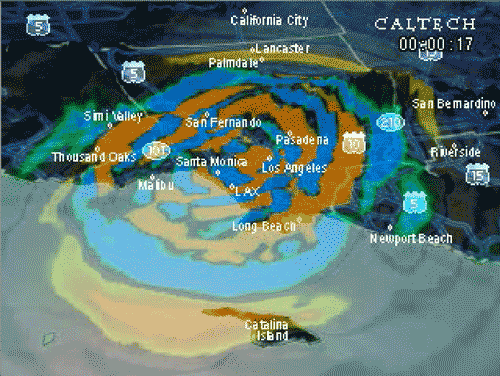Somewhere in Southern California a large earthquake strikes without warning, and the news media and the public clamor for information about the temblor -- Where was the epicenter? How large was the quake? What areas did it impact?
A picture is worth a thousand words – or numbers – and the San Diego Supercomputer Center (SDSC) 1 at UC San Diego is helping to provide the answers. Caltech computational seismologist Jeroen Tromp can now give the public movies that tell the story in a language that’s easy to understand, revealing waves of ground motion spreading out from the earthquake -- and he can deliver these movies in just 30 minutes with the help of a supercomputer at SDSC. But he can’t do it by submitting a job to a traditional computing batch queue and waiting hours or days for the results.

Tromp is an example of the new users in today’s uncertain world who require immediate access to supercomputing resources 2. To meet this need, SDSC has introduced OnDemand, a new supercomputing resource that will support event-driven science 3.
“This is the first time that an allocated National Science Foundation (NSF) TeraGrid supercomputing resource will support on-demand users for urgent science applications,” said Anke Kamrath, director of User Services at SDSC. “In opening this new computing paradigm we’ve had to develop novel ways of handling this type of allocation as well as scheduling and job handling procedures.”






